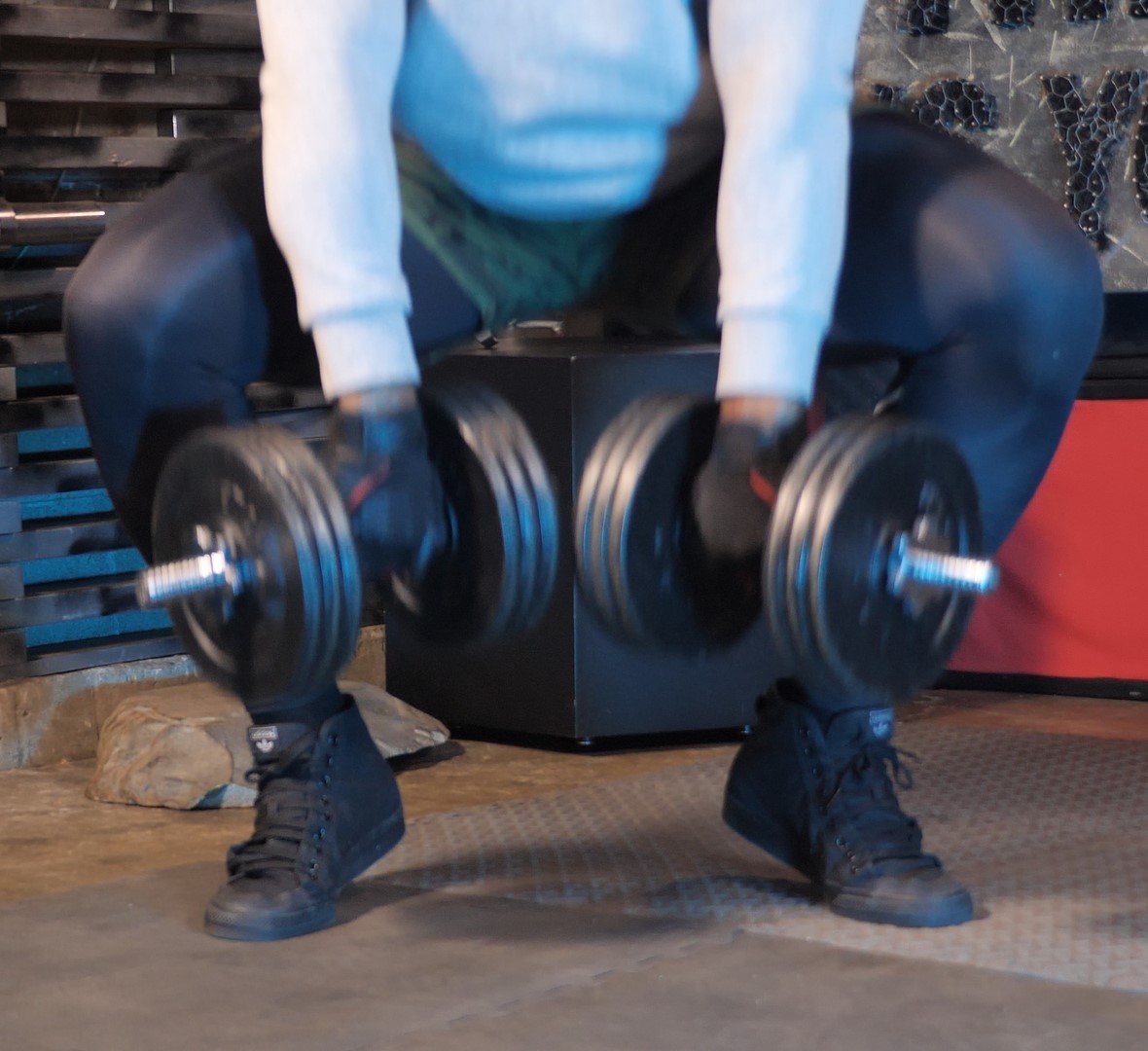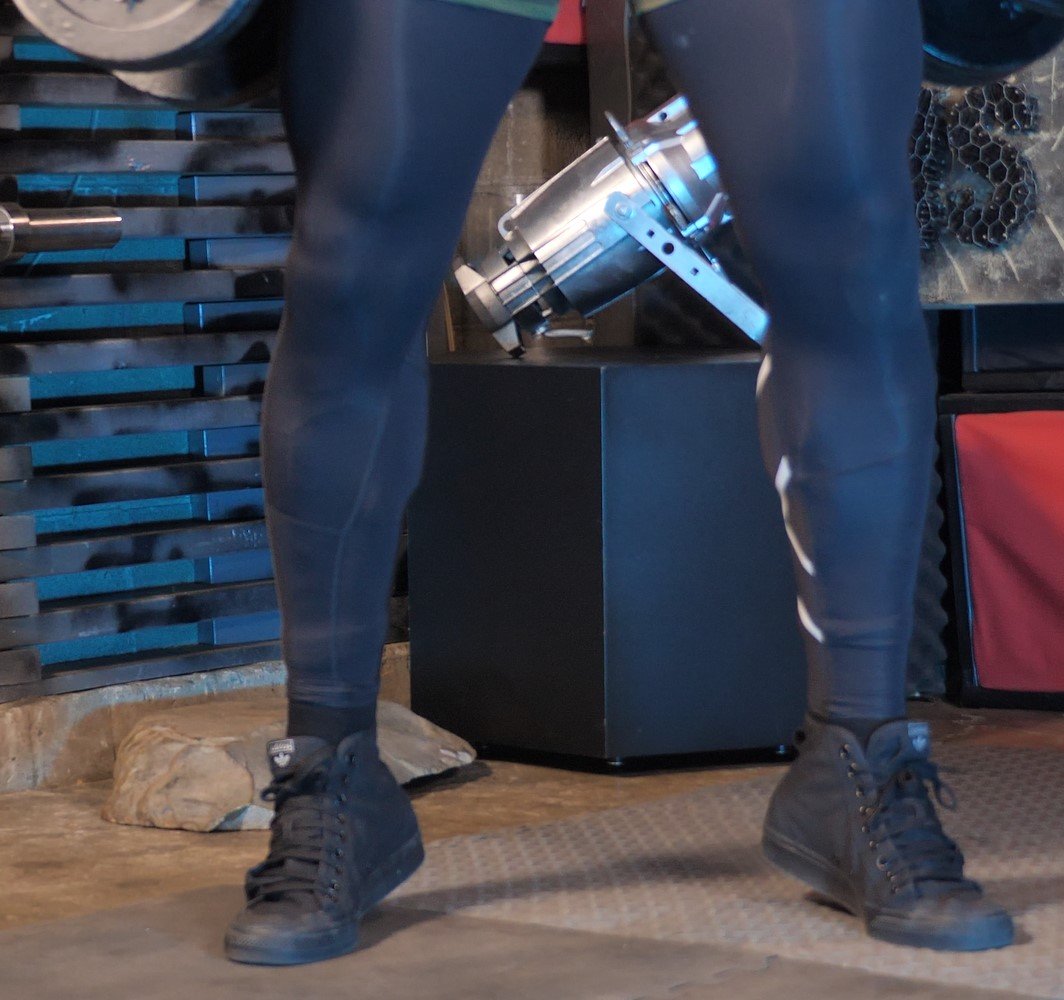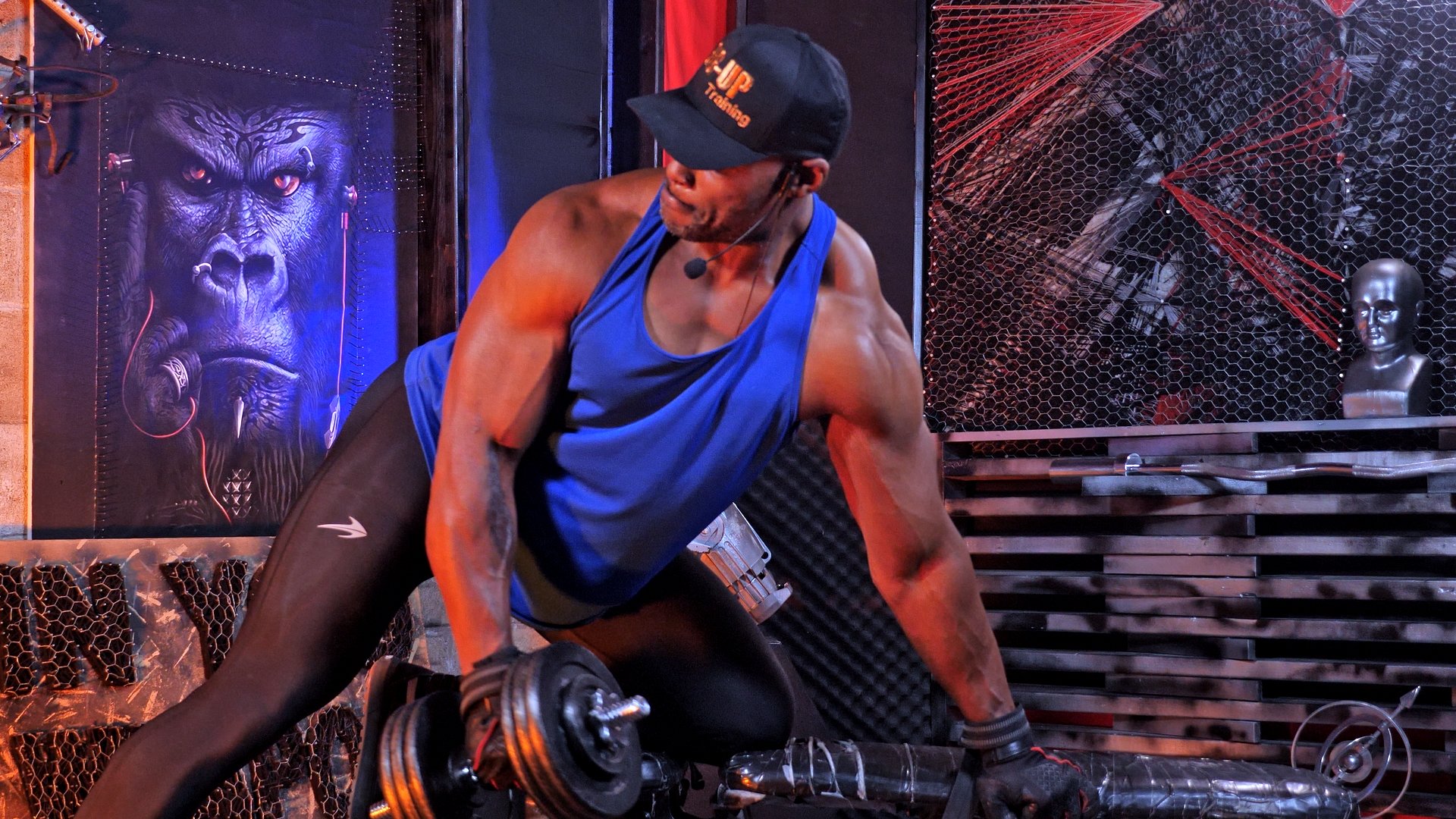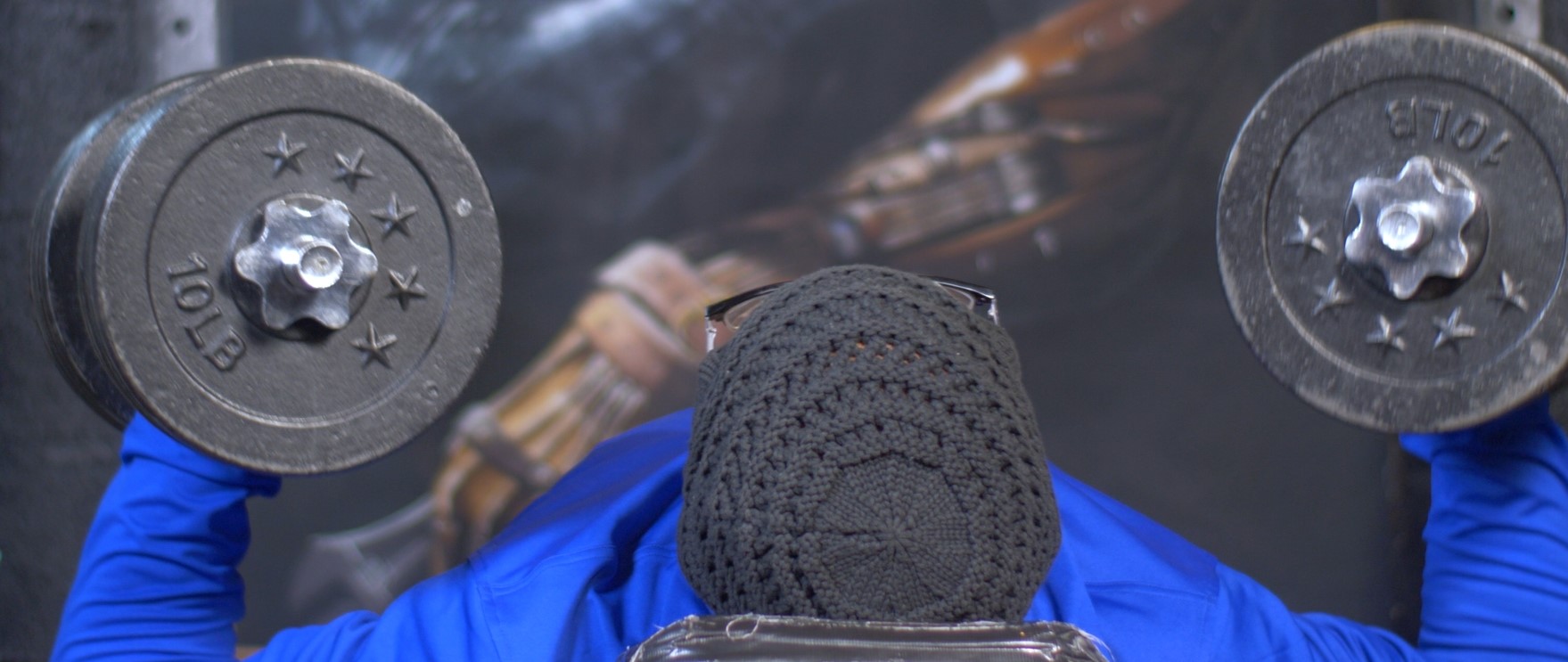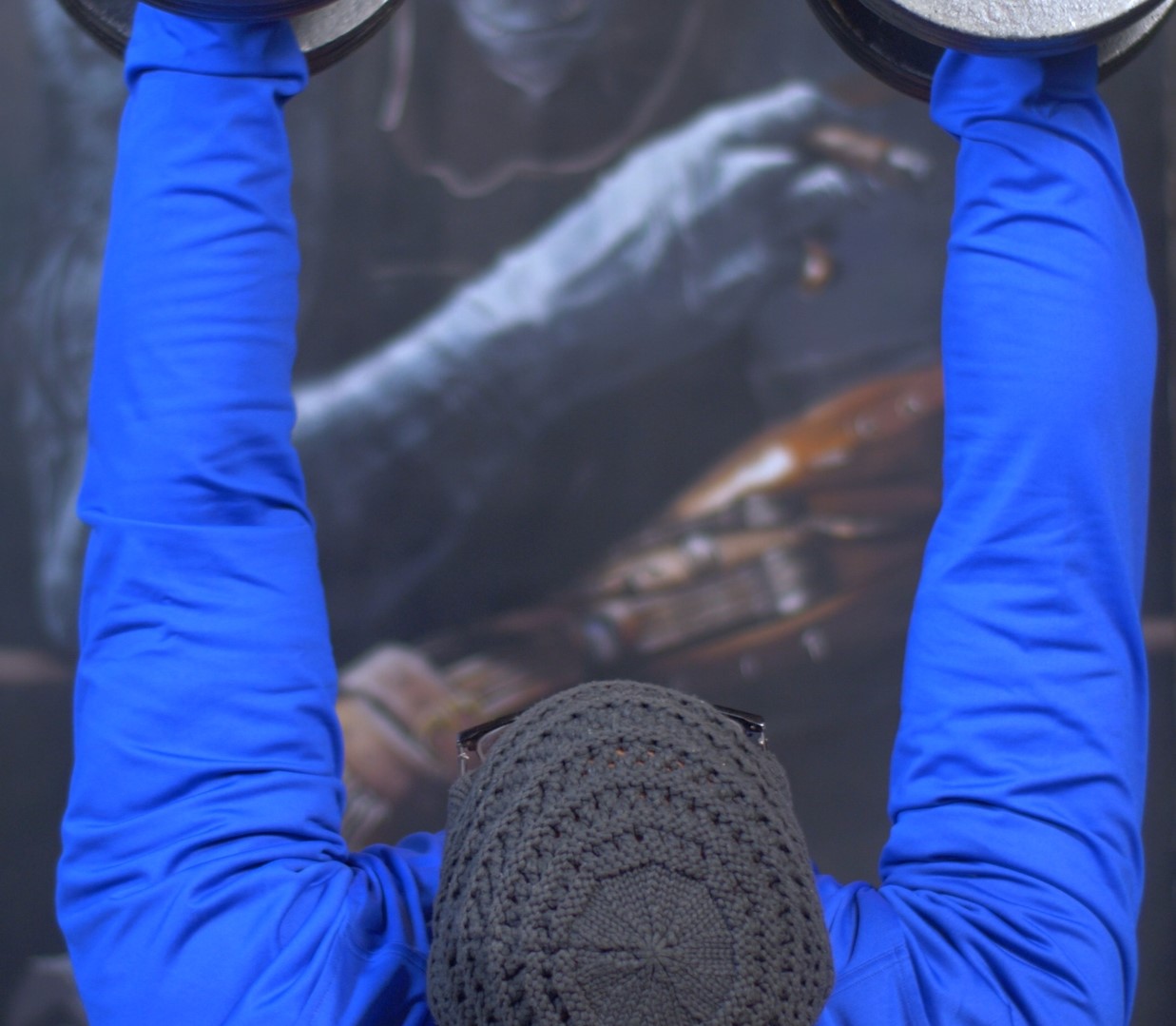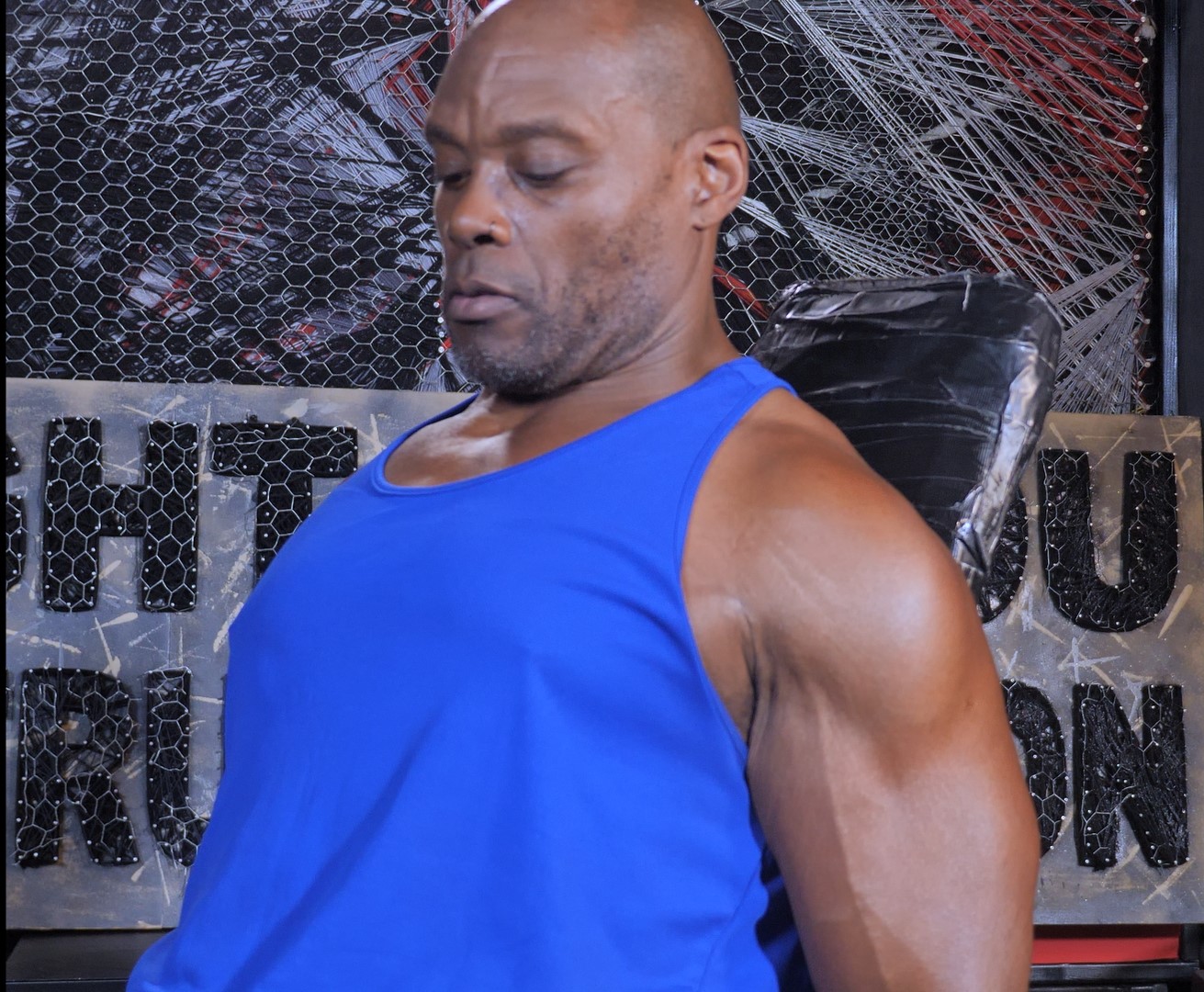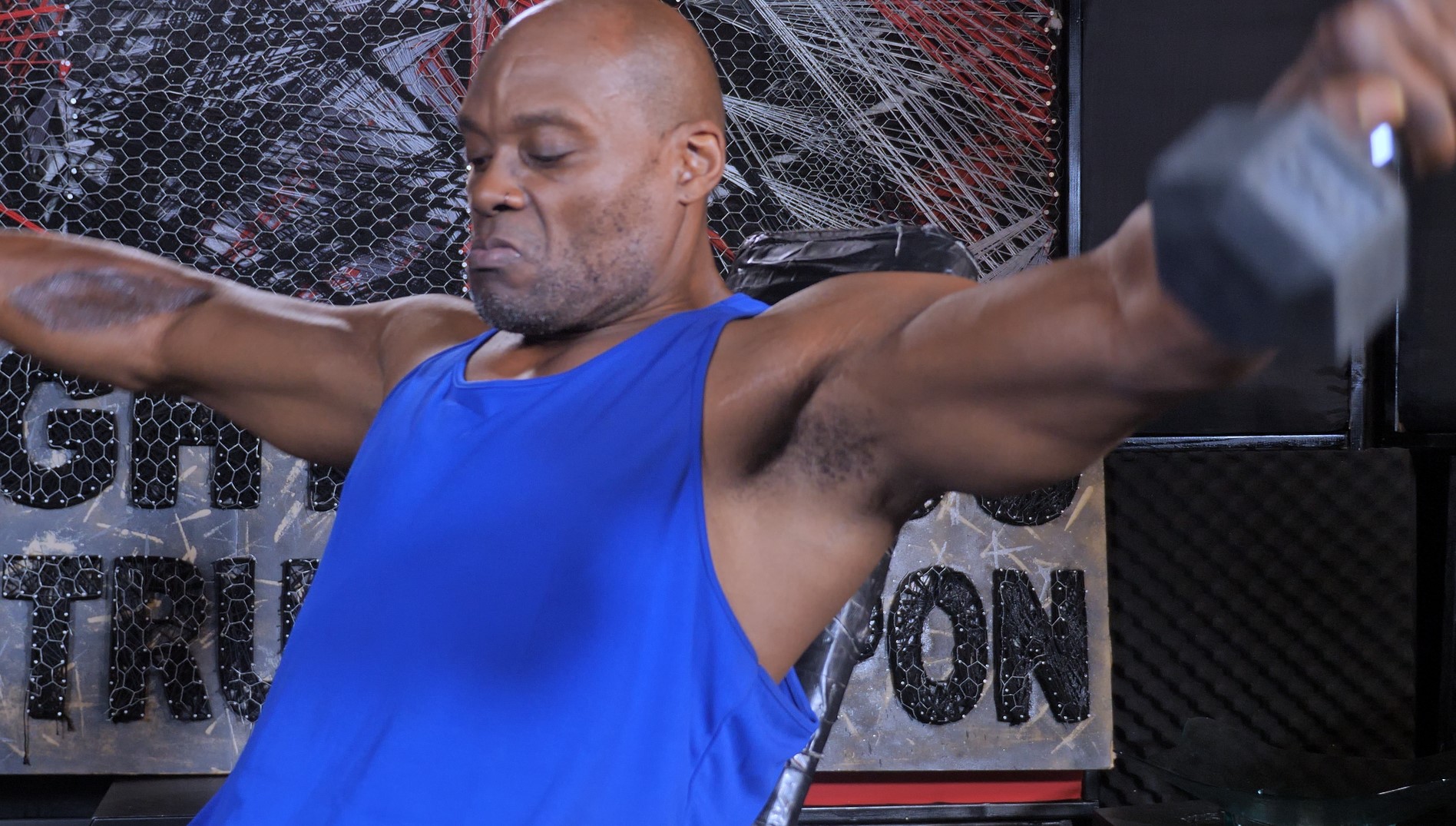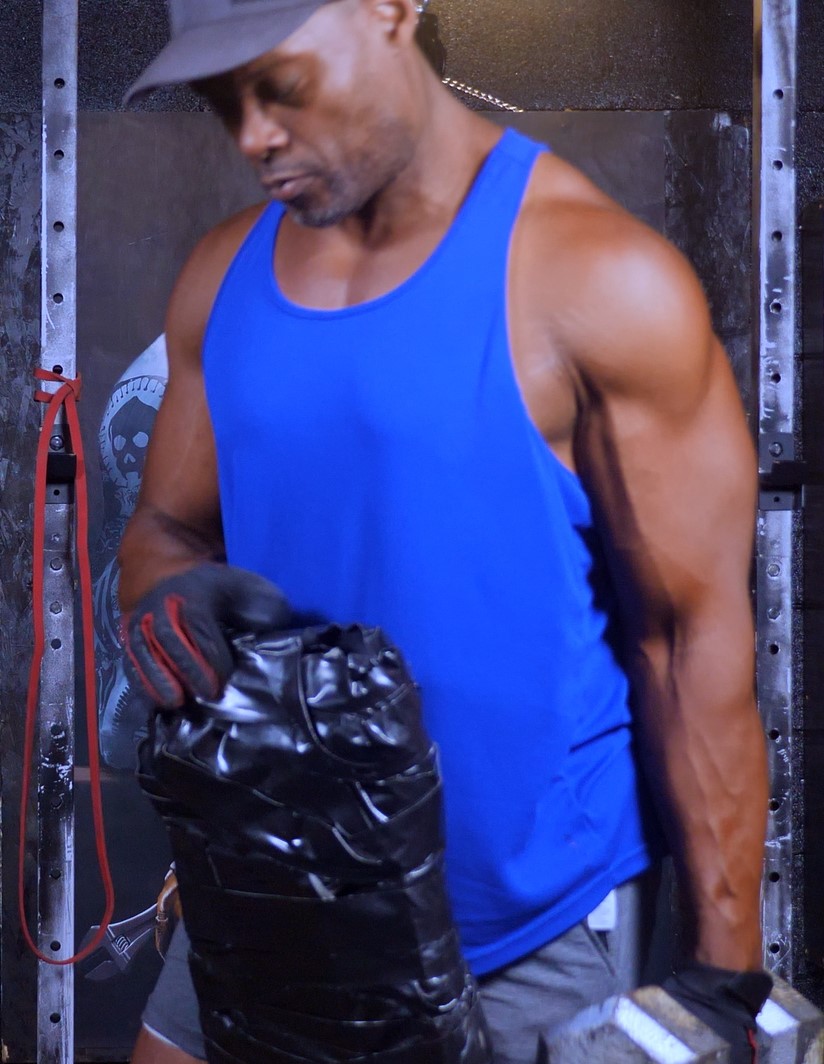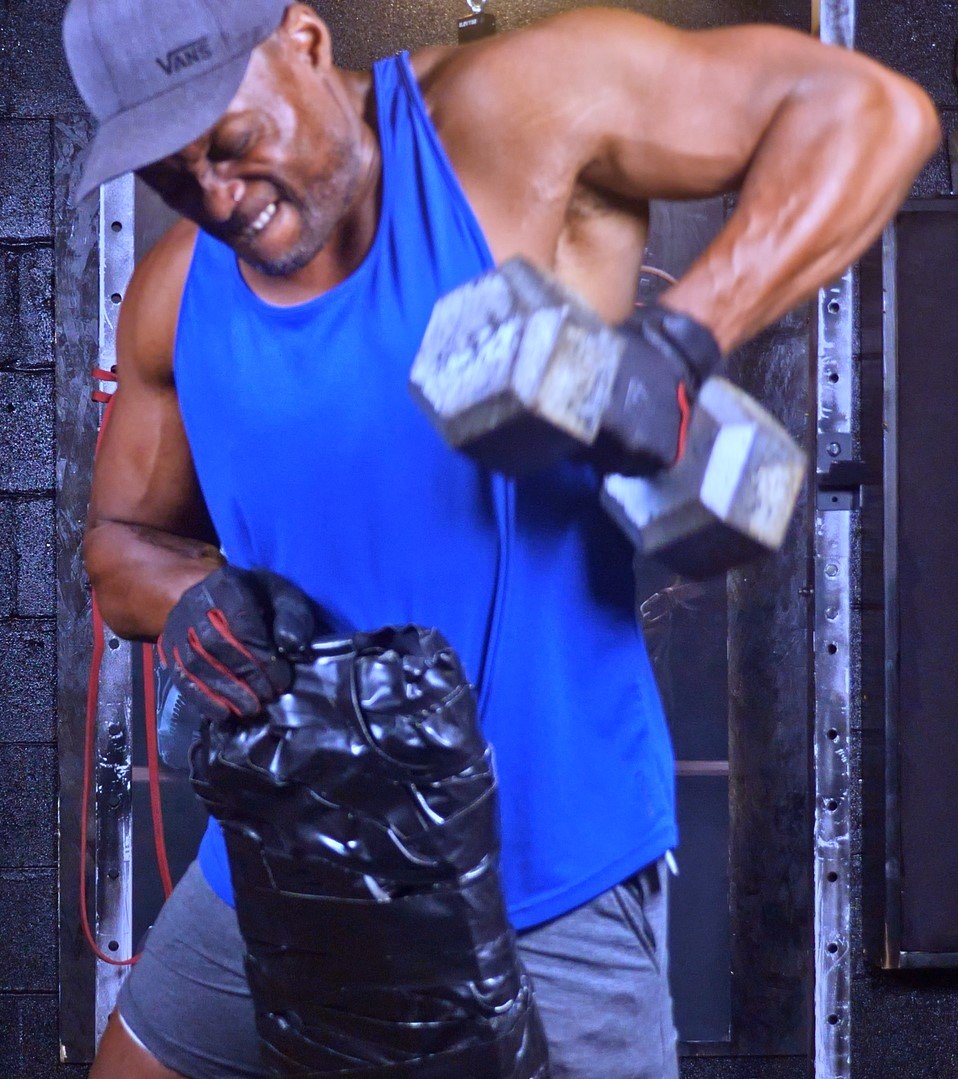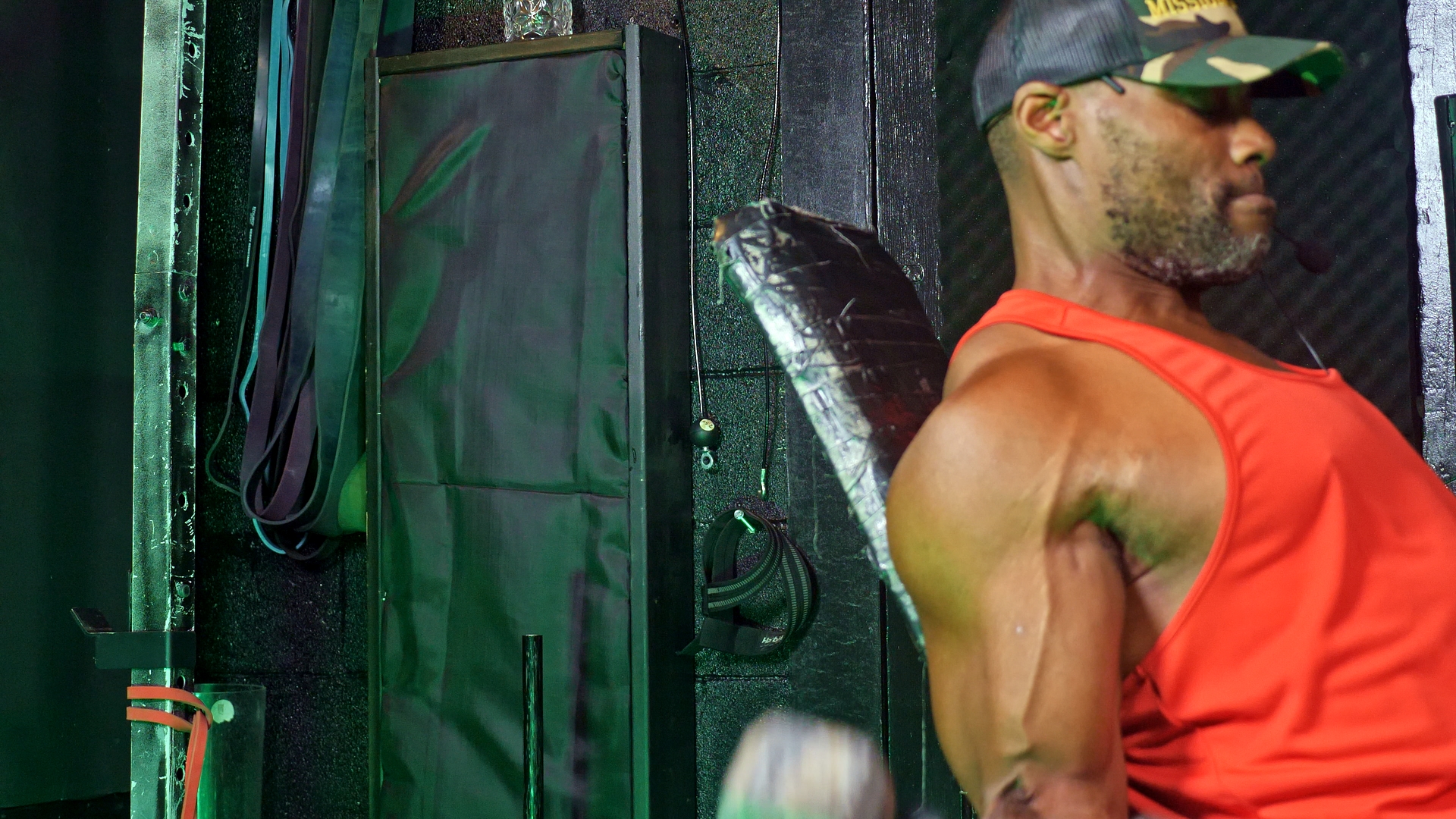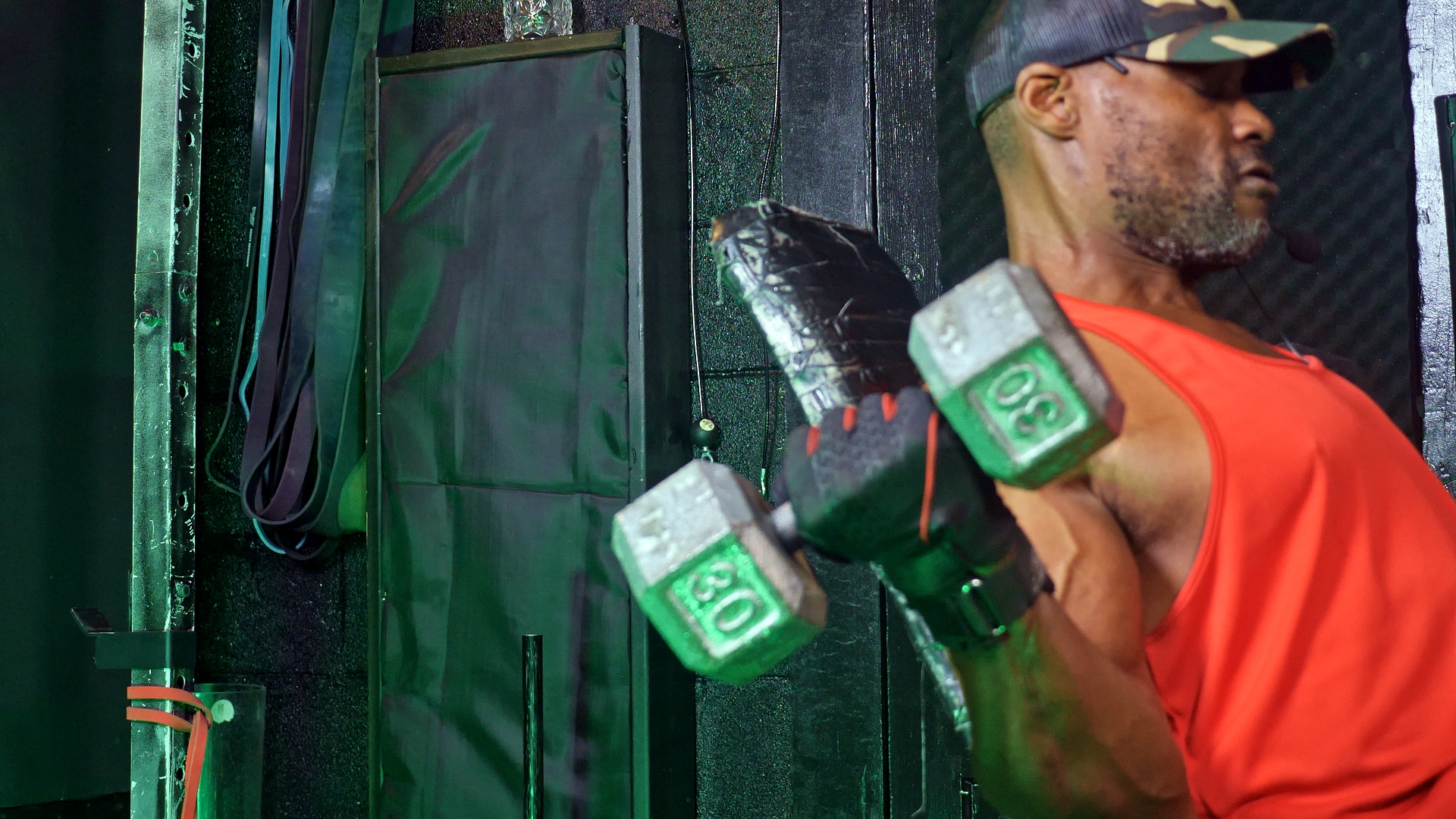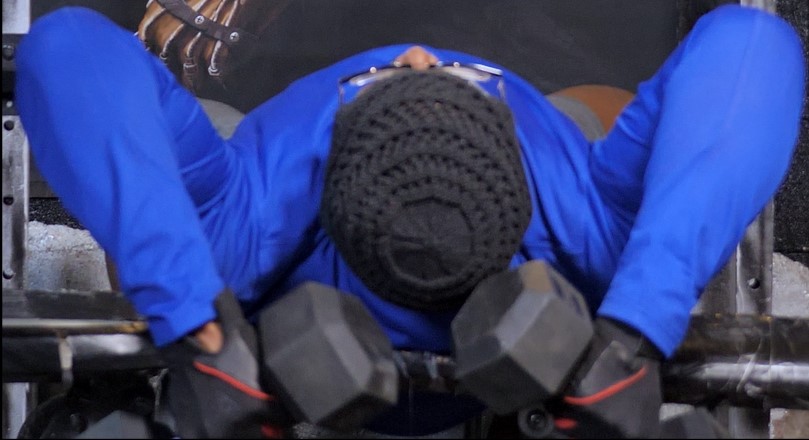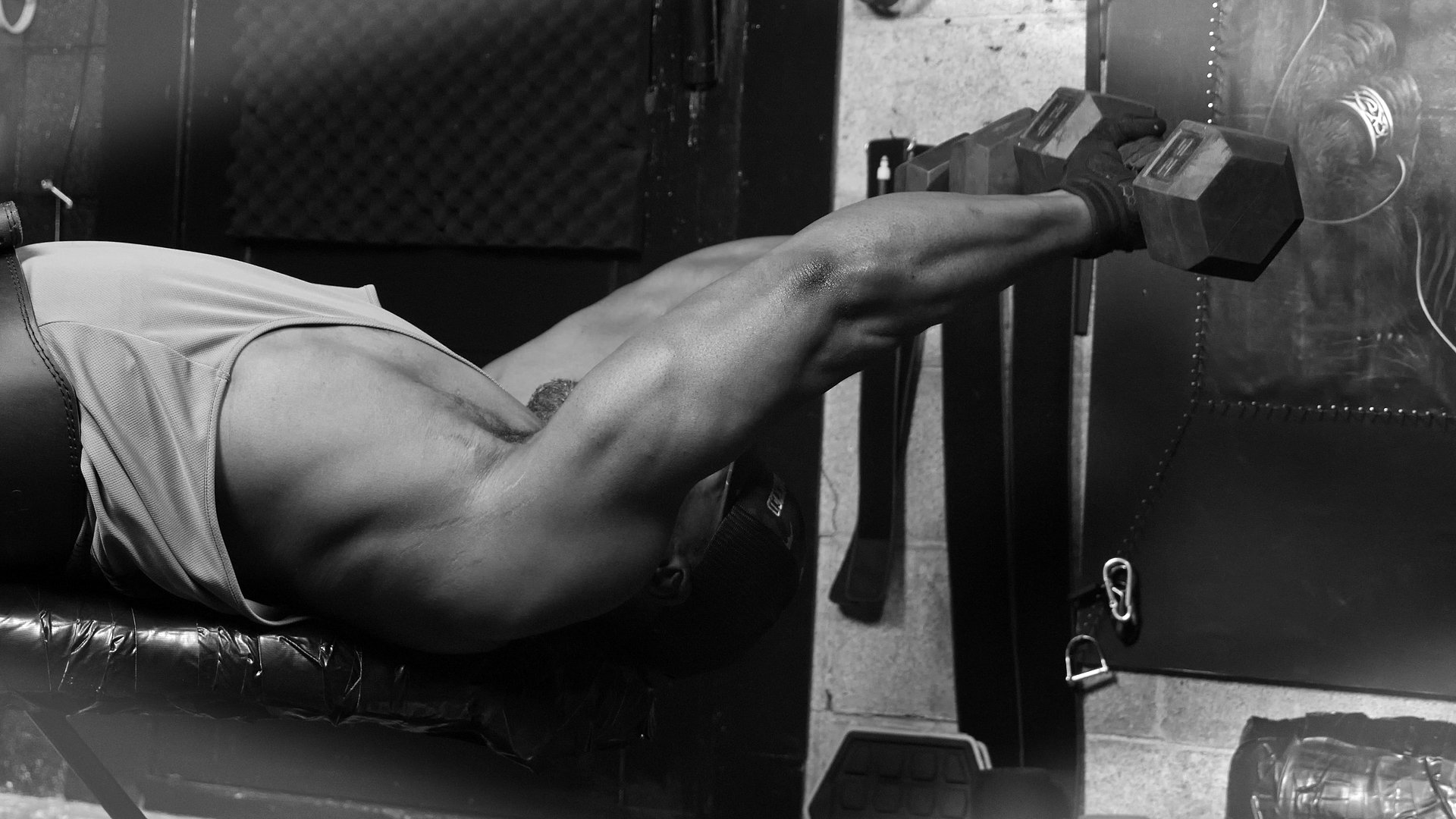Mission Jacked.com
A Home Dumbbell Workout To Get You Jacked
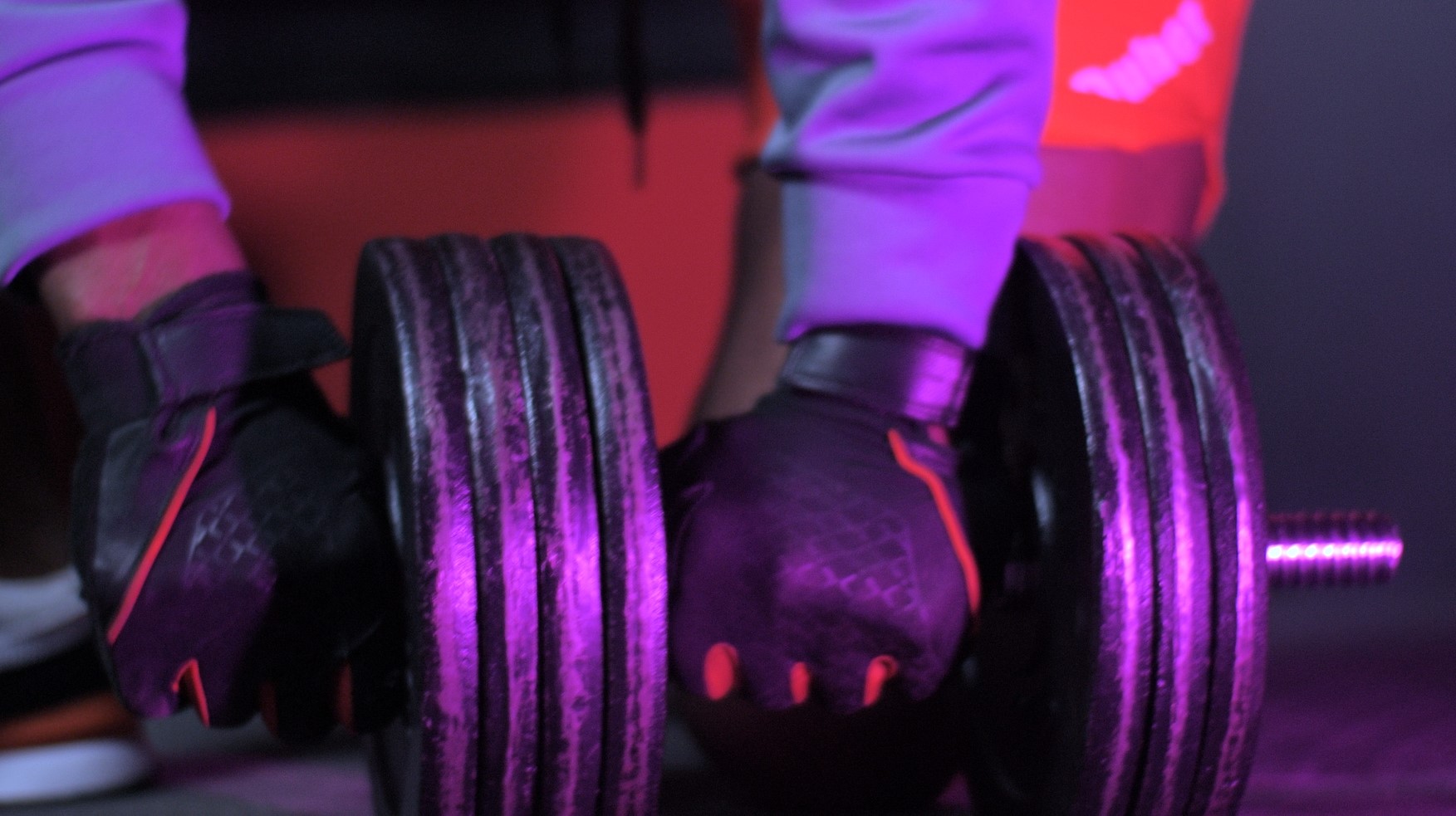 A great home dumbbell workout you can add to your training program to stimulate more muscle growth
#homeworkout #dumbbellworkout #musclebuilding #workoutprogram
A great home dumbbell workout you can add to your training program to stimulate more muscle growth
#homeworkout #dumbbellworkout #musclebuilding #workoutprogramBored of the same old home dumbbell workout?
Do you want a workout that builds muscle and gets you jacked?
Great, you’ve clicked on the right article. My name is Psymon H., workout motivator and creator of the BIG-UP Training System, a home gym muscle building program for the intermediate and advanced lifter serious about improving their physique.
In this read, I’m going to share a great full body workout you can add to your training program to stimulate muscle growth, and a training protocol you can use for this workout session including sets and repetition ranges.
Some of the exercises may be new to you, so I’ve added exercise cues, pictures and helpful tips so you can hit the ground running and make this your next home dumbbell workout. My advice is that you designate one workout per week over a four week cycle for this exact training routine to measure gains, results and performance.
Hamstring Workouts With Dumbbells
Home Dumbbell Workout Exercise List:
Here’s a list of the exercises we’ll be using for this home dumbbell workout.
· Complete Lower Body: Dumbbell Toe Squats
· Back: Twisted One Arm Dumbbell Row
· Chest: Incline Barrel Press
· Side Deltoids: Incline Lateral Raise
· Rear Deltoids: Single Arm Side Upright Row
· Biceps: Incline Jam Curls
· Triceps: Reverse & Twist Dumbbell Skull Crushers
On week one, you should start with 3 sets per exercise and based on your performance, recovery and fatigue level, you can gradually work your way up to about 4-5 sets per exercise.
The 3 Best 25 lb Dumbbells On The Market
Training Protocol:
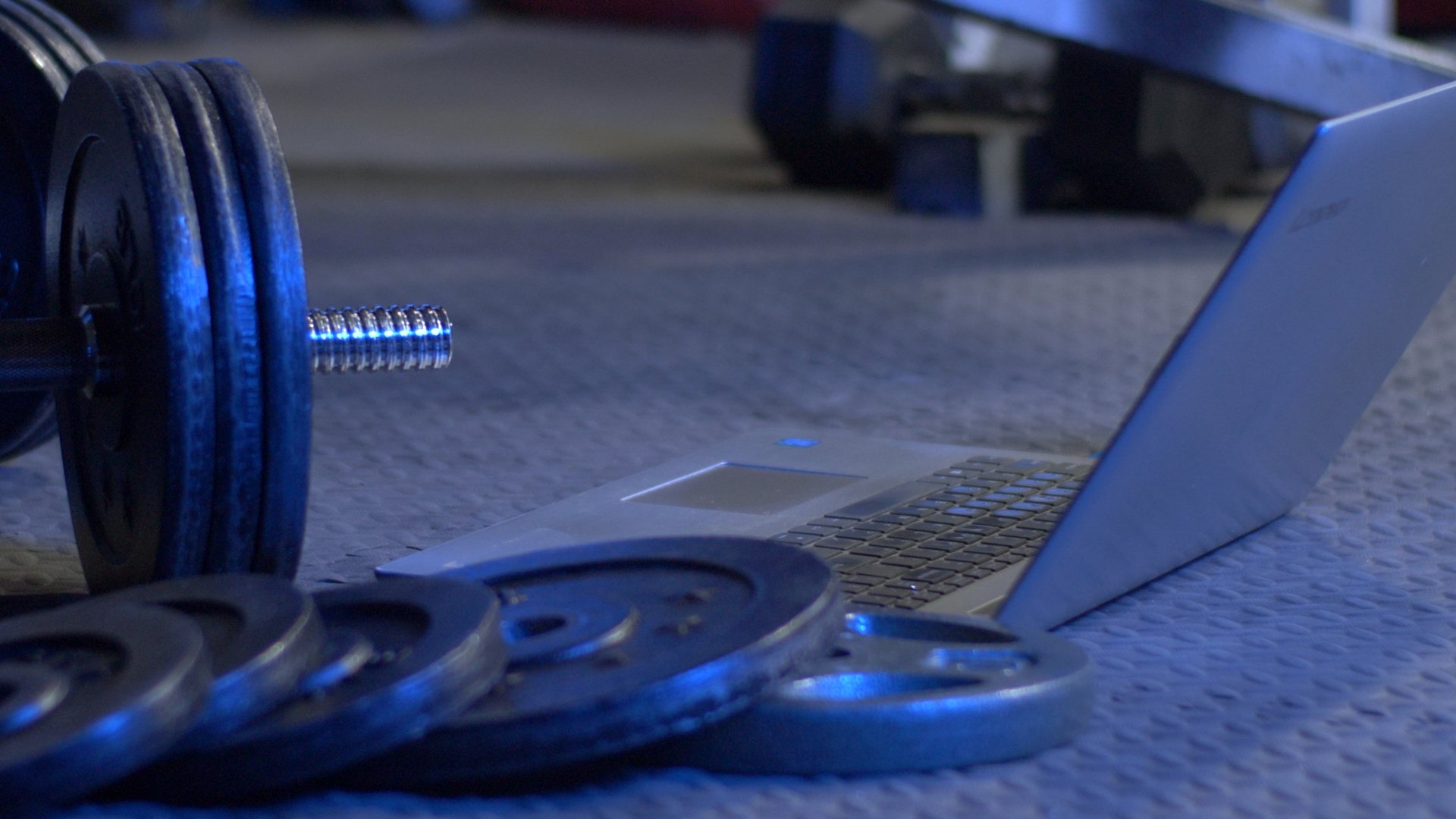
This training session uses auto-regulation training that simply ebbs and flows based on your current level of fatigue. When you use auto-regulation training, your fatigue is being managed on your performance within a given set.
This means that sometimes you lift more and sometimes less weight for the same amount of reps per set and reps in reserve, because naturally, you'll push yourself when you’re in an optimal state to perform and when you’re not, you pull back.
One important note to make about auto regulation training is that this protocol uses "Reps in Reserve" as a tool to measure the intensity of effort. If you're new to reps in reserve, don't worry, you'll soon get the hang of this convenient way of tracking workout intensity and measuring how hard a set feels and how many more repetitions you could have achieved to failure.
Also, this home dumbbell workout has variables you can control, which help to develop the skill of rating your workout performance set by set. For example, to help you discover your exertion level on this workout session, you’re asked to perform 8 repetitions per set, aiming to leave no more than 2 reps in reserve. This will ensure you are achieving maximum motor unit recruitment which stimulates muscle growth.
To get a better idea of this home dumbbell workout protocol. After the first set of 8 reps has been completed, you'll assess your performance with the specified 2 reps in reserve in mind. You do this by asking yourself a simple 'yes' or 'no' question after each set: "Am I above or below the Reps in Reserve target?"
If you undershoot your reps in reserve target, for example, you have 3 or more reps in the tank after set one; you will add weight to set two. If you overshoot the reps in reserve target where you have 1 or fewer reps in reserve, you will remove weight for set two. You repeat this same process after each set is completed.
If, after careful consideration, you assess your performance as the same reps in reserve prescribed, i.e., you're not higher or lower than the 2 reps in reserve, then you keep the same load for the following set and ask yourself the same question again after completing the next set.
This way of training will help you continuously assess your performance with a "reps in reserve" benchmark in mind. At first, you may have difficulties rating your reps in reserve as a standalone measurement of performance, but because there's a rep-per-set yardstick given for this workout, you only need to assess whether you're higher or lower than the reps in reserve target.
The major advantage of including this protocol in your home dumbbell workout is that it teaches you how to become a really efficient self-coach. It’s advised that you make a note of every working set so over the four week cycle, you can follow your progress and make the necessary adjustments.
As the weeks move on, what you thought were two repetitions in reserve on week one may eventually feel more like a three or four reps in reserve by week four.
In the above scenario, it doesn't matter if you're always above or below the reps in reserve benchmark; the key is to measure your performance set-by-set and be in a position to adjust the weight accordingly.
You may need to bookmark this article so you can revisit the training protocol as and when you need to refresh your memory. Now we have the protocol locked in and loaded, let’s turn our attention to the best way to execute each exercise.
traditional push press
Home Dumbbell Workout Exercise List & Cues:
Home Dumbbell Workout
Exercise One:
The Toe Squat
If you’re looking for a hard-hitting and time saving lower body dumbbell movement, the name, “Toe Squats” implies that you’re not only working your Quads, but also engaging the Calves, Hamstrings, Abductors, and Glute muscles for good measure.
This is one of the most challenging exercises to master if you have less than good balance, but an exercise worth learning for all the good it can do for your lower body. Named the Toe Squat because the entire movement is carried out on your toes, this exercise will blow up your lower half with just a few sets.
Target Muscles: Calves, Quads, Abductors, Hamstrings and Glutes
Equipment Needed: A pair of dumbbells.
Cue 1: Start on your toes, shoulder-width apart, with feet pointed out at about a 45-degree angle.
Cue 2: Have the two nearest dumbbell heads at an angle as you pick them up with palms facing in with the dumbbells in between your legs as you slowly lift them off the floor. Make sure to maintain a flat back throughout the movement.
Cue 3: Drive up on your toes, and as you straighten your legs, rotate the dumbbells until they are outside of each thigh with palms almost facing away from you.
Cue 4: As you lower down for the start of the next rep and as your knees open out, slowly bring the dumbbells back, so they are in between your legs with your palms facing in towards you.
Cue 5: Keep on your toes throughout the movement.
Hamstring Dumbbell Workout
Home Dumbbell Workout Exercise 2:
The Twisted One Arm Dumbbell
Row:
If you've grown stale from always doing Dumbbell Bent-over Row in your home dumbbell workout, why not try the Twisted One Arm Dumbbell Row. While similar in some ways to the Single-Arm Dumbbell Row, the twisted version really targets the lower Lats to the point of almost cramping.
Target Muscle Group: Lower Lats
Equipment Needed: Flat bench and one dumbbell.
Set-Up: The set-up is the most important aspect for getting the exercise looking and feeling right.
1: Start by kneeling on the edge of a flat bench and placing your hand as support, similar to a Single-arm dumbbell row. The goal here is to place the leg that is on the ground as far back as possible without losing your balance and falling over.
2: The next part of this setup is responsible for the lower Lat being involved. Pick up a dumbbell and twist your upper torso so that you're looking over the hip of the leg resting on the ground.
Cue 1: Unlike the traditional Single Arm Row, where you lower the dumbbell to the floor for a fuller stretch before rowing it, here you only row until your arm is straight. With your torso twist in place, retract your shoulder and row the dumbbell as if you're about to place it in your back pocket.
Cue 2: At this point, you should feel your lower Lat contract. While maintaining the twist, bring the dumbbell back to the straight arm position, making sure not to lose your balance. Remember that you are not rowing the dumbbell to the ground but until your arm is straight.
Cue 3: Make sure before each repetition that you are twisted and looking over your hip before retracting your shoulder and setting off.
Choosing Urethane and Rubber Dumbbells For Your Home Gym
Reverse Grip Dumbbell Row
Home Dumbbell Workout
Exercise 3:
The Incline Barrel Press
This is a great dumbbell press variation that will put major stress on the upper Chest fibers. As with all pressing movements, setup is crucial.
Items Needed: Incline bench and one pair of dumbbells.
Setup: Always keep your core stable and locked in place. By doing this you prevent movement at the spine which can change the plane and angle you are working in. To do this, sit back on an incline bench set between a 45 and 60 degree angle. Next, you need to extend at the Thoracic spine and not at the Lumbar spine by tensing your core and bringing your chin down towards your chest so you are looking down your torso.
Cue 1: Learn to create distance from the top of your Sternum to the insertion of your Pectoral muscle. The greater the distance, the greater the opportunity there is for muscles to create mechanical tension. Start with palms facing each other and arms set at a right angle with elbows out.
Cue 2: Lock your shoulders into place by retracting your Scapula and pinning your shoulders blades into the bench. By doing this, the chest gets to do more of the work.
Cue 3: Before pressing the dumbbells up, tense through your mid and lower traps to initiate the first part of the movement. This will help to create more tension in the muscle.
Cue 4: Maintain the distance with each dumbbell and follow through with the shoulders as they reach the top of the movement. Slowly return back to the start position.
Home Dumbbell Workout
Exercise 4:
Incline Lateral Raise
This is a great Lateral Raise variation that takes momentum out of the movement and focuses everything on the medial Deltoid head.
Items Needed: Incline bench and a pair of dumbbells.
Cue 1: Set an incline bench at a 60 degree angle and sit back with a pair of dumbbells at your side. I want you now to slightly flare your Lats. You’re going to initiate the first 25% of the movement with your Lats; by doing this you help to eliminate the rotator cuff muscles from taking over.
Cue 2: As you approach half way in the movement, lead the rest of the way with your Elbows until the dumbbells are at shoulder height. Make sure to tilt the bells as if you are pouring water as you reach the top.
Hamstring Exercises With Dumbbells
Home Dumbbell Workout
Exercise 5:
Single Arm Side Upright Row
Dumbbell Rear Delt fly
To really target the rear Deltoids, you must bring your arm up and back. This exercise movement helps you to achieve this.
Target Muscle Groups: Rear Deltoids
Items Needed: Upright bench and one dumbbell.
Cue 1: Kneel on a bench with dumbbell at your side and palm facing in towards you.
Cue 2: Keeping your hand close to your side, row the dumbbell up as far as you can go, trying to lead with your elbow.
Cue 3: Hold at the top for a brief second before
slowly lowering the dumbbell to the start position
Home Dumbbell Workout
Exercise 6:
The Incline Jam Curl
This short Bicep head exercise is a variation of the incline dumbbell curl, and a movement, if done correctly, will have you wanting to drop the dumbbells long before the set is over.
The significant two major differences between the incline dumbbell curl and the Incline Jam Curl is the setup and the angle at which you curl the dumbbells.
Target Muscle: Short Bicep Head
Items Needed: Incline Bench set up about 60 degrees and a pair of dumbbells.
Cue 1: Sit back on an incline bench with dumbbells in hand. Pin back your shoulders so your elbows are jammed into your sides. You should feel your Lats tense as you lift your Chest up and tighten your core.
Cue 2: Keeping your elbows tucked in and dumbbells out to each side, tense your Biceps before curling the dumbbells so they come up in line with your mid-Deltoids instead of in front of you. As you get to the top of the movement, gently rotate the dumbbells so your pinky finger is higher than the rest of your hand.
Cue 3: Briefly squeeze each dumbbell before slowly returning to the start position. Repeat for 8 repetitions.
Choosing The Best Dumbbell Set With Rack 5 50 lb. Combo
Home Dumbbell Workout
Exercise 7:
The Reverse and Twist Skull Crusher
No doubt you’ve done your fair share of the standard Skull Crushers in your time, so I thought I’d add in a variation that really goes to work on all three Tricep Heads. The Reverse and Twist Skull Crusher isn’t an explosive high thrill seeking movement, but more of the silent deadly type that can heap lots of misery on the Triceps if engaged correctly.
Target Muscle Group: Triceps
Items Needed: Flat bench and a pair of dumbbells.
Cue 1: Lay back on a flat bench with the dumbbells in a reverse grip position behind the crown of your head and elbows in the air.
Cue 2: As you bring the dumbbells out and not too far over your head, twist them so that at the top of the movement, your palms are facing away from you. Do not flare your elbows out to the side or swing the bells during the movement, which can incorporate momentum.
Mission Jacked Tip: A helpful tip when performing any pull exercise in this home dumbbell workout is to use wrist straps to help maintain a good grip on the dumbbells. There’s nothing worse than your grip giving out before you’ve had time to fully work the muscles.
Last Thought:
Now you’ve read this home dumbbell workout article, don’t just sit on the information – Act on it and kick-start another round of muscle growth. Click below for more home dumbbell workout articles and let the muscle gains begin.
Article 2: Get Jacked With This Full Body Workout With Dumbbells
Article 3: The Best Dumbbell Shoulder Workout For Mass monster Status
Article 4: This is arguably the best chest and tricep workout with dumbbells (Part One) if you’re planning on building muscle at home.
Article 5: Try the Best Back and Bicep Workout With Dumbbells For a Size Increase
28 of the Best Dumbbell Exercises for Building Muscle
Mission Jacked L.L.C
Address: 9407 NE Vancouver Mall Dr
STE 104 #1269
Vancouver, WA 98662 USA
Email: mission@missionjacked.com
